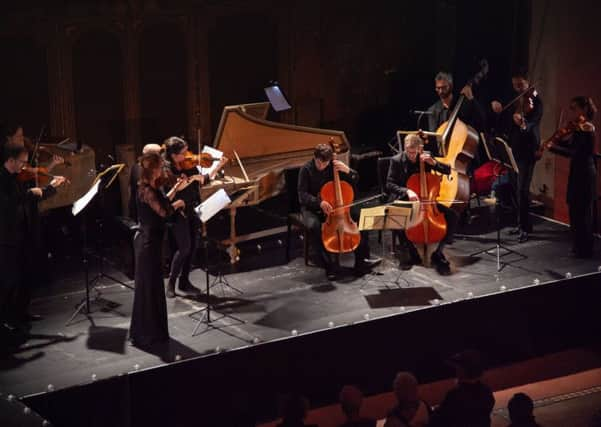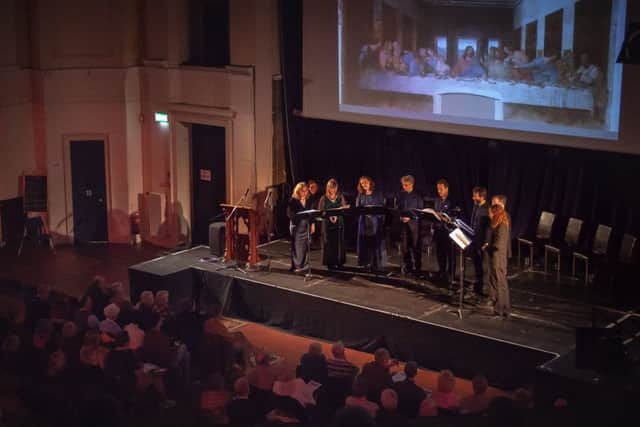Hastings Early Music Festival, review: Thursday to Sunday, October 17-20


In a very short time, Hastings Early Music Festival has established itself not only for the quality of the performers but for the level of audience enthusiasm that the events have raised.
Here we were, in St Mary in the Castle, to hear Jan Rautio playing Bach, who opened with BWV 974, the D minor concerto based on Alessandro Marcello. However, he was playing a modern Steinway – about as far removed in tone as one could imagine from Bach’s own time, and distinctly different from the original instruments the night before. This itself is tellingly important, for much of the playing seems to look forward rather than backward. As such the slow movement of the Marcello took on a far more romantic, almost Mozartian feel, and the final movement of the arrangement of BWV593 seemed to pre-echo the intensity, if not the magisterial impact, of Beethoven. Between these two we heard the F major Italian concerto BWV971, which impressed with its sense of authority and drive. It could easily have gone on much longer.
Advertisement
Hide AdAdvertisement
Hide AdThe concert mirrored that which we had heard the night before given by the HEMF Baroque Ensemble, made up entirely of original instruments and tuning.


Maintaining the egalitarian feel of the ensemble, there was no sense that it was being driven by a despotic conductor as each of the six works was led and introduced by different soloists. We opened on familiar ground with Bach’s third Brandenburg concerto, through the less familiar Harpsichord concerto BWV1056, to Vivaldi’s virile Double Cello Concerto RV531. One of the most pleasing aspects of the evening was the way in which, stood most of the time in a gentle curve, the musical development could be experienced physically as ideas were passed from one player to another along the line and back again. Similarly, the 12 players were equally important to the whole; there was never any sense of a soloist pitted against a supportive body – even in Telemann’s fine Viola Concerto TWV51, which was the only work to come close to a model of the concerto we would come to recognise in the 19th century. It was an object lesson in sensitivity and response.
The evening ended with a glorious performance of Bach’s Double Violin Concerto, the second movement as sublime as I can recall it with never a hint of sentimentality, which modern instruments can all too easily bring to it.
Shaping the Invisible, which I Fagiolini are currently touring, is a departure from the conventional concert as it is based around the creative life of Leonardo da Vinci, with Professor Martin Kemp introducing the large scale projections of paintings and drawings, before Robert Hollingworth provides the links to what we are about the hear. Most of the time these links made very good sense, with some very beautiful liturgical settings by Tallis, Josquin and Victoria. There were also some surprising comic elements with Janequin’s La Guerre and Vecchi’s Daspuoche stabilao. Modern items sneaked in from Howells and Rubbra, and the rich harmonies of Jean-Yves Daniel-Lesur’s La Voix du Bien-Aime where religious intensity verges on the erotic.
Advertisement
Hide AdAdvertisement
Hide AdAll of this flowed effortlessly and with consummate artistry from all concerned. It was a pity that the final musical setting by Adrian Williams was so stylistically divorced from the rest of the programme.
I Fagiolini ran workshops on Saturday and the final event in this year’s HEMF was at the Kino Teatr on Sunday afternoon with the Consone Quartet. Their programme bridged the period between Boccherini and Schumann, demonstrating with great clarity and beauty the development of the quartet over that time span. They opened with Schubert’s early String Quartet in C D32, with its fresh intensity and exuberant sense of vitality. This was followed by Haydn’s early quartet Op20 No4. The richness of tone in the opening movement was an indication of the particular warmth of gut strings, and this continued to be marked for the rest of the quartet, even in the skittish final movement.
After the interval we heard Boccherini’s brief quartet Op33 No5, which only extends to two movements but has fine changes of dynamic intensity and liveliness.
The final work was Schumann’s quartet No2 Op41. Here we are on the verge of modern instrumentation but there was good reason to set it within the context of the earlier works and on original instruments, for it rapidly becomes clear that Schumann is hearing the instruments quite differently to the way we do today and thus the expectations of the listener are quite different. It was equally clear that the acoustic in the Kino Teatr was an essential part of the experience and one that helped both the ambience and intimacy of the event.
Advertisement
Hide AdAdvertisement
Hide AdThe festival was over all too soon. Director Jane Gordon has done a magnificent job in a very short time to establish the festival for quality, intimacy and involvement.
Next year is the big Beethoven anniversary and promises to be equally enthralling.
John Lydon heads to White Rock Theatre as part of a unique UK tour. Click here to read more.
Four things to do in the Hastings area. Click here to find out more.
Four things to do in East Sussex. Click here to read more.
Four things to do in Eastbourne. Click here to read more.
Craig Charles headlines a huge party at Hastings’ White Rock Theatre. Click here to read more.